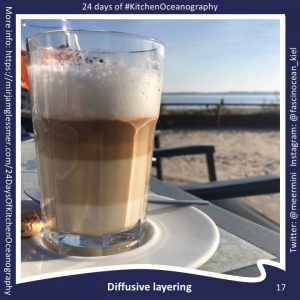
Tag: double diffusion

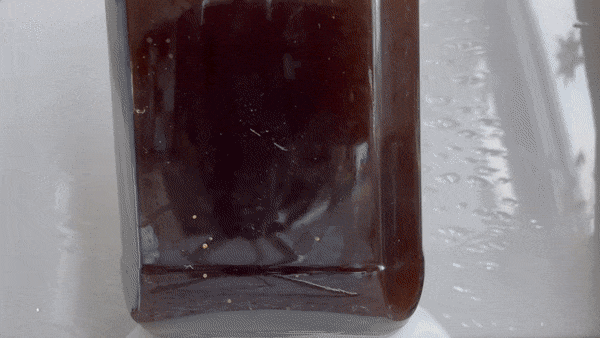
Diffusive layering — a super easy experiment!
Day 17 of my 24 days of #KitchenOceanography is about double-diffusive layering, and the post is using “go have a nice latte” as instructions. However, in times of Covid-19 (and…


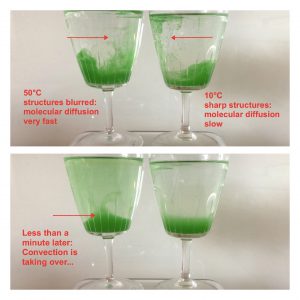
Temperature dependency of molecular diffusion, and convection taking over
I saw the idea for this experiment on Instagram (Max is presenting it for @glaeserneslabor) and had to try it, too! The idea is to put drops of dye into…

Salt fingers in my overturning experiment
You might have noticed them in yesterday’s thermally driven overturning video: salt fingers! In the image below you see them developing in the far left: Little red dye plumes moving…
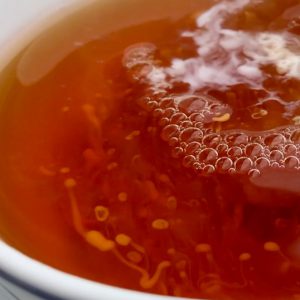
Ostfriesentee — Double diffusion in a tea cup
Showing double-diffusive mixing in tank experiments is a pain if you try to do it the proper way with carefully measured temperatures and salinities. It is, however, super simple, if…
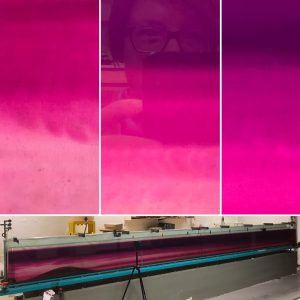
Accidental double-diffusive mixing
When setting up the stratification for the Nansen “dead water” demo (that we’ll show later today, and until then I am not allowed to share any videos, sorry!), I went…

Layered latte: A great real-life example of double-diffusive mixing!
Sometimes sitting in a café for a work meeting with #lieblingskollegin Julia can lead to unexpected discoveries of oceanographic processes — in my latte! It’s those little things that inspire blog…

Experiment: Double-diffusive mixing (salt fingering)
On the coolest process in oceanography. My favorite oceanographic process, as all of my students and many of my acquaintances know, is double-diffusive mixing. Look at how awesome it is:…

Experiment: Temperature-driven circulation
My favorite experiment. Quick and easy and very impressive way to illustrate the influence of temperature on water densities. This experiment is great if you want to talk about temperature…

“Laboratory layered latte” – combining latte and double diffusion. Easily my favourite paper ever!
My friends know me well. Especially A&I, which was proven again when they sent me the link to an article about two things that I am mildly obsessed with: Latte…

Double the trouble — a poem about double-diffusive mixing in the ocean
On my blog’s fourth Birthday (!!!), it’s time to try something new. How about some celebratory oceanographic poetry? Obviously the topic has to be my oceanic pet process, double-diffusive mixing……

I am missing institute seminars! Or: Why we should talk to people who use different methods
You probably know that I have recently changed my research focus quite dramatically, from physical oceanography to science communication research. What that means is that I am a total newbie…

My favorite demonstration of the coolest mixing process: Salt fingering!
I am updating many of my old posts on experiments and combining multiple posts on the same topic to come up with a state-of-the-art post, so you can always find the…

Salt fingering
My absolute favorite experiment ever: salt fingering. I know I’ve said it before about another experiment, even today, but this is my absolute favorite experiment and I still get endlessly…